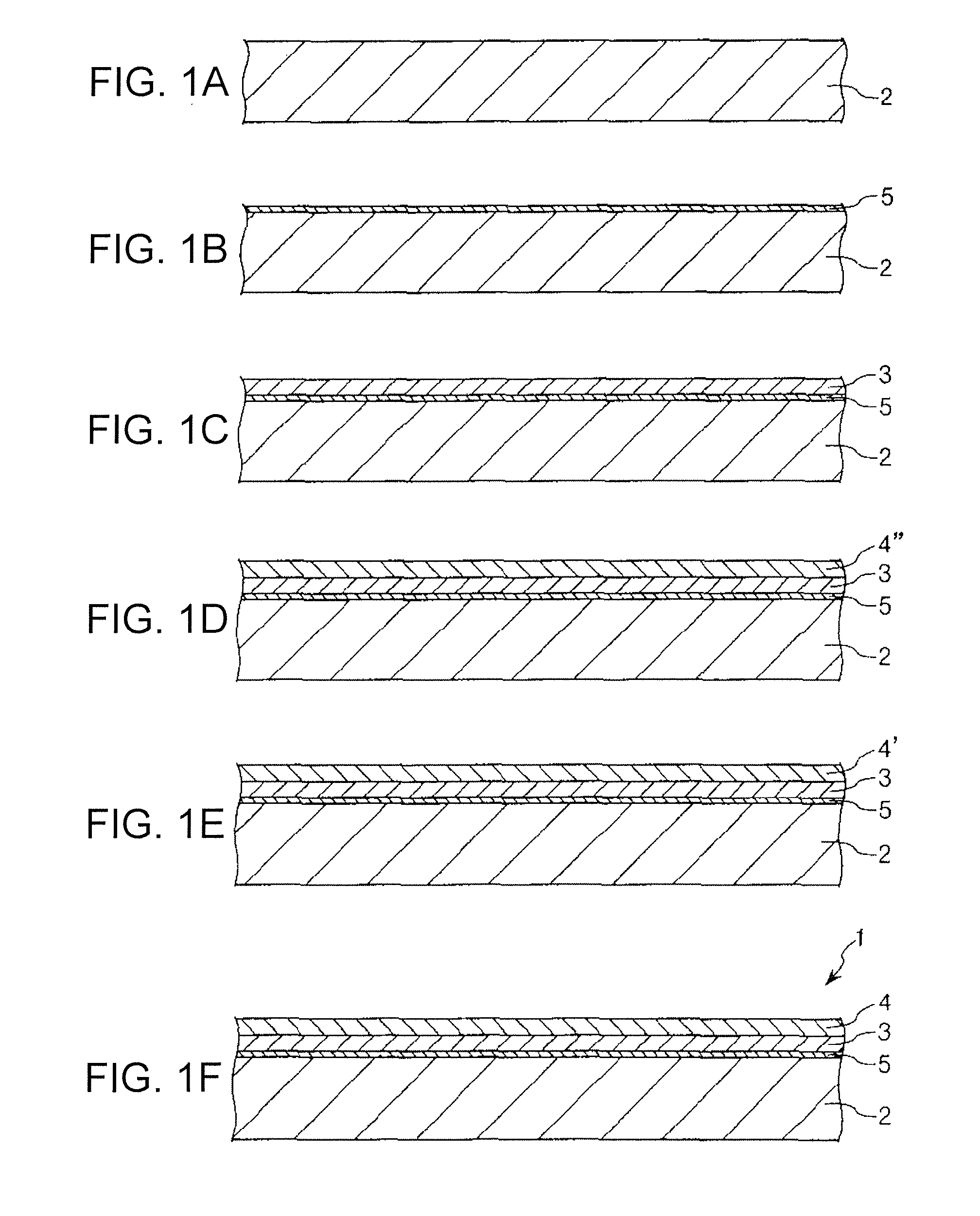Method of manufacturing a decorative article, a decorative article, and a timepiece
a manufacturing method and decorative technology, applied in the direction of instruments, superimposed coating processes, transportation and packaging, etc., can solve the problems of low hardness of this alloy, affecting the appearance of the timepiece, so as to achieve outstanding durability, prevent random color variations, and outstanding appearance with luster
- Summary
- Abstract
- Description
- Claims
- Application Information
AI Technical Summary
Benefits of technology
Problems solved by technology
Method used
Image
Examples
embodiment 1
[0167]A decorative article, specifically part of a wristwatch case (the back cover), was manufactured by the method described below.
[0168]A substrate having the desired shape of a wristwatch case (back cover) was manufactured by a casting technique using stainless steel (SUS 444), and then ground and polished as required.
[0169]This substrate was then cleaned. The base material was cleaned by electrolytic alkaline degreasing for 30 seconds followed by dipping in an alkaline degreasing solution for 30 seconds. Then followed neutralization for 10 seconds, a water wash for 10 seconds, and a demineralized water wash for 10 seconds.
[0170]Using a vapor phase epitaxy system as described above, a base layer of Ti was formed on the cleaned substrate as described below.
[0171]First, the process chamber of the vapor phase epitaxy system was vented (pressure reduced) to 3×10−3 Pa while preheating the chamber.
[0172]Argon gas for cleaning was then introduced to the chamber and the workpiece was cle...
embodiments 2 to 6
[0183]These decorative articles (timepiece case member (back cover)) were manufactured in the same way as the first embodiment described above except for modifying the composition of the target used in the second coating formation process and the conditions of the heat treatment process and the conditions of the acid treatment process as shown in FIG. 1, and adjusting or selecting the process time and the composition of the target used in the base layer formation process, the process time and flow rate of the nitrogen in the first coating formation process, and the process time of the second coating formation process to achieve the configurations shown in Table 1.
embodiment 7
[0184]Except for using a substrate made of Ti, a decorative article (wristwatch case (back cover)) was manufactured in the same way as the first embodiment described above.
[0185]The substrate was manufactured by metal injection molding (MIM) as described below.
[0186]First, Ti powder with a 52 μm average grain size manufactured by a gas atomization method was prepared.
[0187]A material containing 75 vol % of this Ti powder, 8 volt polyethylene, 7 vol % polypropylene, and 10 vol % paraffin wax was kneaded. A kneader was used to knead this material. The material temperature during kneading was 60° C.
[0188]The kneaded material was then ground and graded to obtain pellets with an average grain size of 3 mm. Using these pellets in an injecting molding machine, moldings in the shape of the wristwatch case were manufactured by metal injection molding (MIM). The moldings were made with consideration for shrinkage in the debindering process and during sintering. Molding conditions during injec...
PUM
| Property | Measurement | Unit |
|---|---|---|
| thickness | aaaaa | aaaaa |
| thickness | aaaaa | aaaaa |
| thickness | aaaaa | aaaaa |
Abstract
Description
Claims
Application Information
 Login to View More
Login to View More - R&D
- Intellectual Property
- Life Sciences
- Materials
- Tech Scout
- Unparalleled Data Quality
- Higher Quality Content
- 60% Fewer Hallucinations
Browse by: Latest US Patents, China's latest patents, Technical Efficacy Thesaurus, Application Domain, Technology Topic, Popular Technical Reports.
© 2025 PatSnap. All rights reserved.Legal|Privacy policy|Modern Slavery Act Transparency Statement|Sitemap|About US| Contact US: help@patsnap.com



